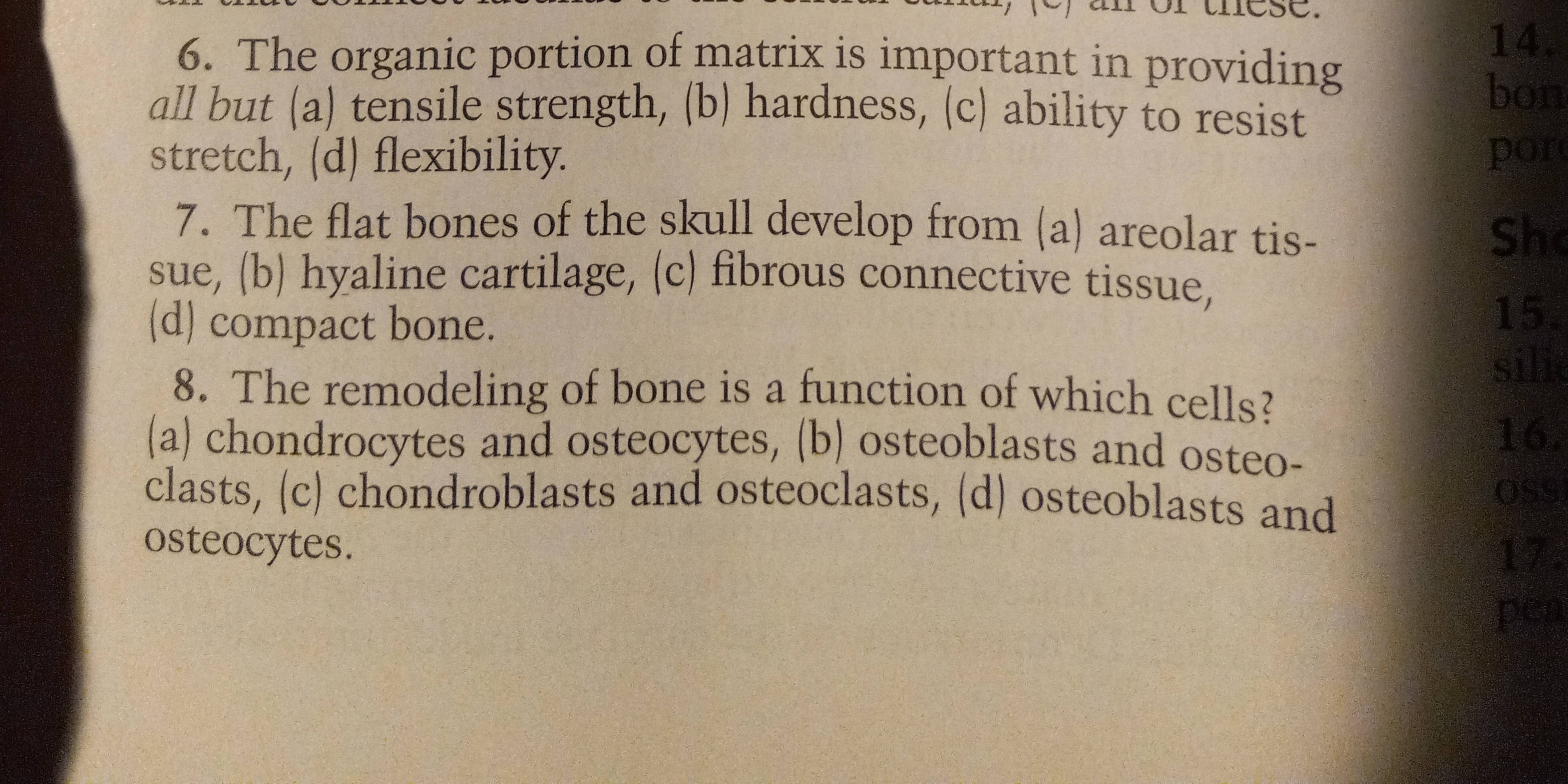The organic portion of the matrix is important in providing all but tensile strength, hardness, ability to resist stretch, flexibility. The flat bones of the skull develop from are... The organic portion of the matrix is important in providing all but tensile strength, hardness, ability to resist stretch, flexibility. The flat bones of the skull develop from areolar tissue, hyaline cartilage, fibrous connective tissue, compact bone. The remodeling of bone is a function of which cells: chondrocytes and osteocytes, osteoblasts and osteoclasts, chondroblasts and osteoclasts, osteoblasts and osteocytes.

Understand the Problem
The question is asking about the facts concerning bone development and remodeling. It seeks to clarify the types of cells involved in these processes and differentiate them. The questions involve multiple choice answers related to biology.
Answer
Hardness; Fibrous connective tissue; Osteoblasts and osteoclasts
The organic portion of the matrix is important in providing all but hardness. The flat bones of the skull develop from fibrous connective tissue. The remodeling of bone is a function of osteoblasts and osteoclasts.
Answer for screen readers
The organic portion of the matrix is important in providing all but hardness. The flat bones of the skull develop from fibrous connective tissue. The remodeling of bone is a function of osteoblasts and osteoclasts.
More Information
The organic matrix provides tensile strength, flexibility, and the ability to resist stretch. The development of flat bones from fibrous connective tissue is via intramembranous ossification, where mesenchymal cells differentiate into osteoblasts.
Tips
Common mistakes include confusing the functions of osteoblasts and osteoclasts or the origins of flat bones.
Sources
AI-generated content may contain errors. Please verify critical information